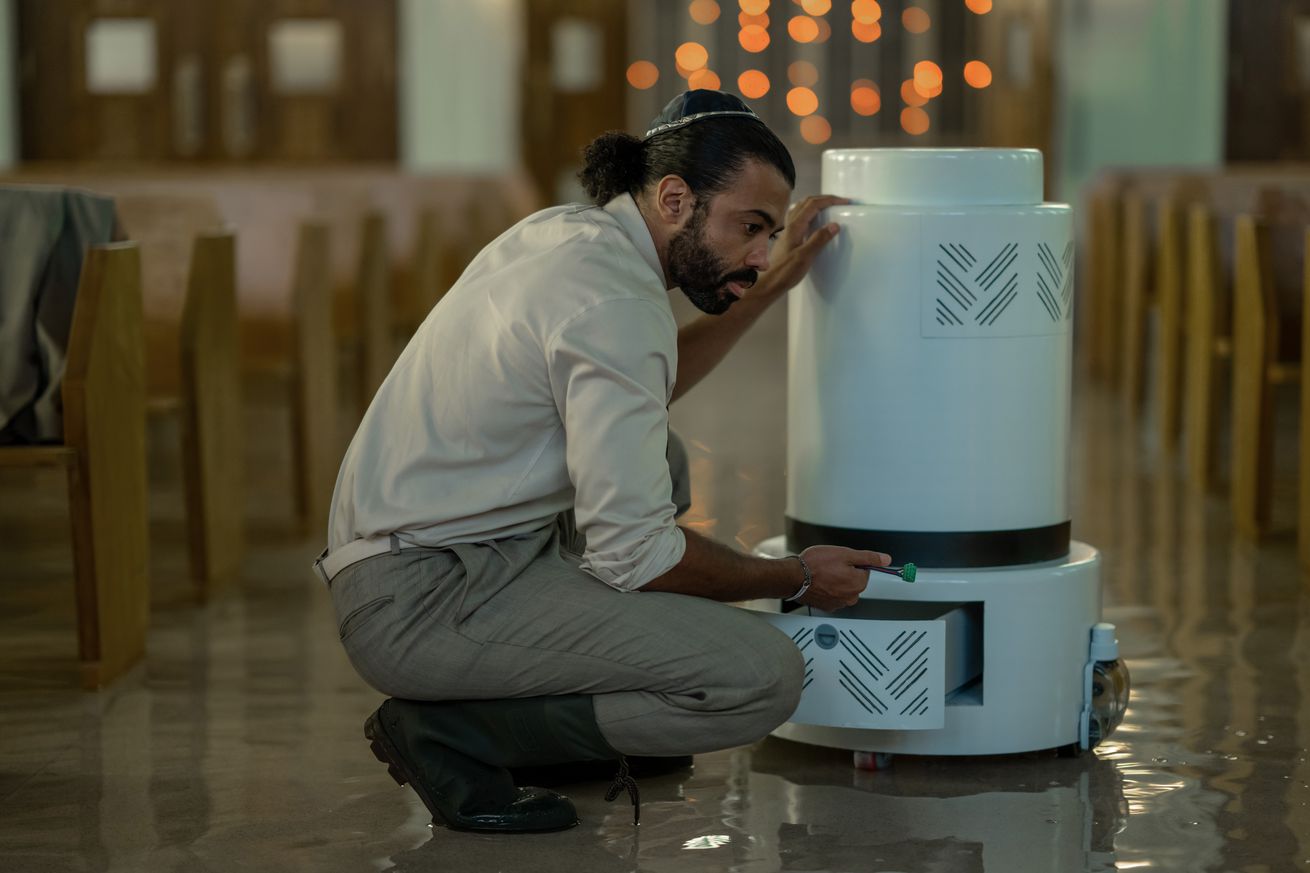
Apple’s climate change drama Extrapolations is earnest and plausible but also has talking whales
It takes a while for Extrapolations to get going. The Apple TV Plus drama has an intriguing premise, exploring the future of climate change through various perspectives, with each episode jumping forward a few years to see how things change over time. It’s as much a prestige drama as it is a thought experiment. But those two sides never quite gel. The science makes for plenty of fascinating situations, but it also gets in the way of telling a focused story. Even worse, the show takes itself so seriously that it often descends into being straight-up goofy. This is a plausible vision of our dark future that also has talking whales.
Note: this review is based on the first three episodes of Extrapolations. It includes very light spoilers for those episodes.
This tension between science and story is most evident in the first episode, set in 2037. It’s meant to set the stage for the events that follow, but it ends up being overwhelming instead, bombarding you with facts, plot threads, and characters to the point that no single one stands out. There are wildfires spreading across the globe, a tense climate summit where countries are fighting over resources, a rich property developer looking to build a casino in the arctic, and a former law student studying to become a rabbi in order to help the many souls affected by the rise in temperature. At the center of it all is a tech billionaire holding onto a patent for water desalination that could ease many of the world’s problems. (The billionaire, played by Kit Harington, is inexplicably named after a famous real-world tech journalist.)
Worldbuilding at the expense of character development
It’s worldbuilding at the expense of character development. The show jumps around so much that you never really have enough time to dig into any of the stories — at least initially. Subsequent episodes get away from this somewhat. While each is essentially a standalone story, there are threads connecting them. You’ll see characters, technology, and — of course — the environment change over time. For instance, in 2037, there’s an ad for a genome technology firm that wants to save animals from extinction; then, the story in 2046 follows a researcher (Sienna Miller) working for that company in order to learn about what might be the last humpback whale.
It ends up playing out a bit like an interconnected anthology, and because of this, the stories vary in quality quite a bit. Episode 2 — the one set in 2046 — is a serious look at animal extinction as well as the long-term health issues that come from rising temperatures and seemingly never-ending forest fires. But it’s also unintentionally goofy at times. The researcher uses some kind of universal translator to hold real-time conversations with a whale, which speaks using the cloned voice of her dead mother (played by Meryl Streep). It’s meant to be tragic but mostly comes off as silly. There are a number of moments like this throughout the show; I won’t spoil anything, but keep an eye out for the walrus.
Keep an eye out for the walrus in episode 1
The show straightens itself out in its third episode, set in 2047, which follows rabbi Marshall Zucker (Daveed Diggs) as he struggles to keep his synagogue going as Miami deals with rising sea levels and frequent tropical storms. It works because the personal stakes are clear. Attendance is dwindling, and the problems keep mounting; the constant flooding means people have to wear rubber boots to the synagogue, and Marshall needs to use an expensive Roomba-like robot to suck up the excess water. As the problems mount and costs rise, Marshall is forced to make some questionable choices about how to keep things afloat (financially and literally). Unlike the previous episodes, in 2047, the environmental devastation is a backdrop, one used to tell a good story. It isn’t the story itself.
As uneven as the opening episodes of Extrapolation are, there are a few things tying it together. For one thing — like a number of other Apple series — this is an expensive-looking show. The cast is pretty wild: in addition to Harington, Streep, Miller, and Diggs, there are also characters played by Heather Graham, Edward Norton, Indira Varma, Marion Cotillard, Forest Whitaker, and Tobey Maguire, among many others. Each episode has at least a few faces you’ll recognize. The show also puts its (presumably) big budget toward some convincing near-future tech, like smartphones that look like pieces of glass, streamlined (and bedazzled) VR headsets, and an adorable metaverse where kids can actually experience snow. It all feels both futuristic and plausible.
Great visual effects and a killer cast can’t carry a show. Extrapolations has a lot of interesting ideas, and at times, they result in an interesting story. But its opening episodes are too scattered to build on that potential. Of course, there’s still plenty of time for it to come together by the end — but then again, there was plenty of time for us to get climate change under control.
The first three episodes of Extrapolations start streaming on Apple TV Plus on March 17th; new episodes will drop every Friday.

